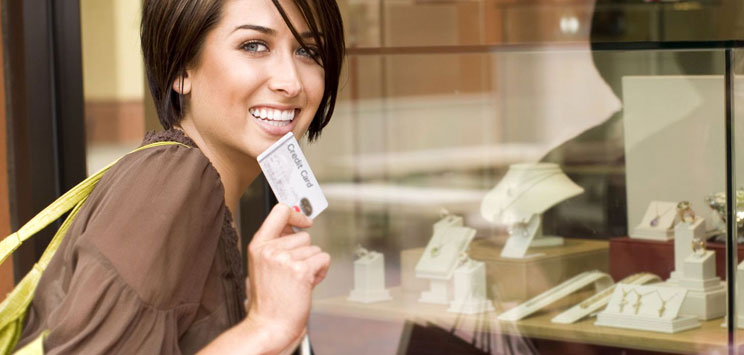
Five Ways to Pay Off Credit Card Debt Quickly
By
Credit card debt is a constant source of crushing stress for many people, but it doesn’t have to carry on forever. There are ways to pay off credit card debt without severely disrupting your life, so take a deep breath and get ready to sense just what it feels like to bring your reduce your credit card debt down to a more manageable level, or even eliminate it all together.
Here are five ways to pay off your credit cards without being forced to eat nothing but cheap bologna sandwiches and ramen noodles for every meal in the meantime.
5. Call Your Credit Card Companies.
The first, and perhaps one of the most important thing, you can do as a consumer is call your credit card lenders and tell them that you’d like to negotiate a lower interest rate. If you have made payments in a timely manner—even minimum payments—they will be likely to work with you so that you can find a repayment plan that works for you, and in many cases, this includes a lower interest rate.
You do have the option of transferring balances onto lower rate cards. In fact, if your credit card company seems unwilling to work with you, tell them you are considering closing your credit card account and transferring their balance to a credit card with a lower interest rate. More times than not, especially if you carry a high balance with them, they will appease you so that they do not lose your business.
4. Prioritize Your Accounts
Chances are, when you sit down and think about how much debt you really have, you take a ballpark stab at the overall number because that amount of debt is spread out over several cards. You might have $11,000 in total debt, but that might be divided up into three or more credit card accounts. Checking out the terms of each individual card is extremely important to the pay down process.
You might have $6,000 on a card with a 10% interest rate, $3,000 on a card with a 6% interest rate and two retail credit cards that each have $1,000 on them, but have interest rates in the 18% range. Rather than paying them all off at once, your best bet is to pay them off one at a time.
You can choose two ways to pay off your cards. The first is to make as high of payments as you can on your highest rate card while making minimum payments on your lower rate cards. As your high rate cards are paid off, you simply move onto the next highest card until you have paid down all your debt.
3. Put the Cards in the Drawer
The biggest mistake consumers make when trying to pay off credit cards—or even simply using credit cards—is using them with good intentions to make purchases their finances simply cannot uphold. It may not seem like much, but even small purchases—things like restaurant meals, gas for your car or buying new clothing—but it all adds up, and it adds up fast.
You should only be putting what you can afford to pay off the following month on a credit card, with the exception of dire emergencies, such as the replacement or repair of a large appliance or other time critical purchases. Nix even the smallest purchases on any credit card, especially while you’re paying your cards off.
No matter what you do, though, don’t close your credit accounts if you can help it. Closing accounts can negatively impact your credit score, so it’s best to keep them open as long as they do not have any monthly or annual fees to accrue.
2. Create a Budget to Stay Focused
Living comfortably while you’re working on paying off your credit cards does not have to be a pipe dream; it simply takes some planning. Come up with a household budget that includes everything, from your monthly bills to savings to a little bit leftover for fun.
1. Consider Using Your Equity to Pay Off Cards Quickly
If you’re a homeowner, you have a nice little nest egg sitting all around you: your home. You may have tens of thousands—even hundreds of thousands—of dollars in equity in your home that has built up from all the years you have spent making your monthly mortgage payments. If you are interested in doing a cash-out refinance of your home, you could enjoy several benefits that could greatly improve you financial situation almost immediately.
First of all, when you cash out your equity and refinance your home, you get to skip one mortgage payment, and in some cases, two. Once your refinancing has closed, it takes time for the billing to catch up to the mortgage, so you’ll get to live mortgage payment free for one to two months. That right there is money in your pocket right away that you can use to pay down credit cards.
Secondly, you will receive a large cash payment for the equity in your home. Cash out refinancing basically starts your home loan over to square one again so that you are able to liquidate the funds you have wrapped into your equity and utilize them so that you can get a fresh start.
Lastly, in many cases, homeowners find that they can refinance their mortgages at a lower rate than they currently have, thus saving them money on interest and lowering their monthly payments. This will allow you to have more cash available each month so that you can live more comfortably from now on.
To learn about cash-out home refinancing and learn if it might be right for you, call NLC Loans toll-free at (877) 480-8050. One of our friendly Personal Mortgage Advisors will listen your situation and needs so that you can make an informed decision about taking control of your future. They will even be able to provide you with a quote right away to let you know how much savings you would experience if you were to refinance you home with NLC Loans.














 newsletter no longer available
newsletter no longer available